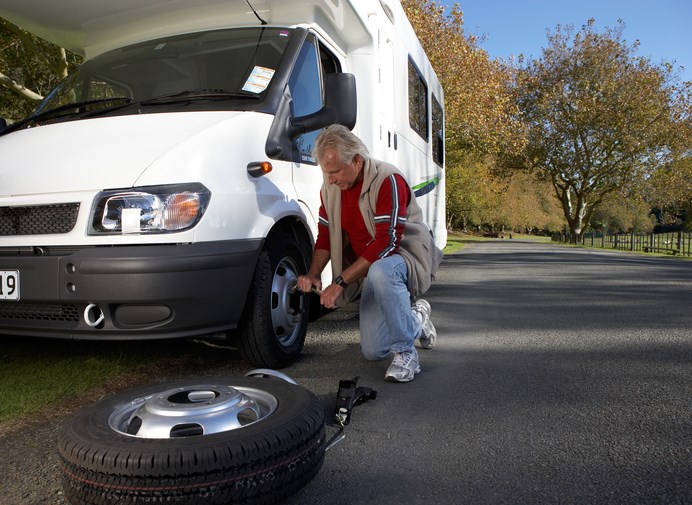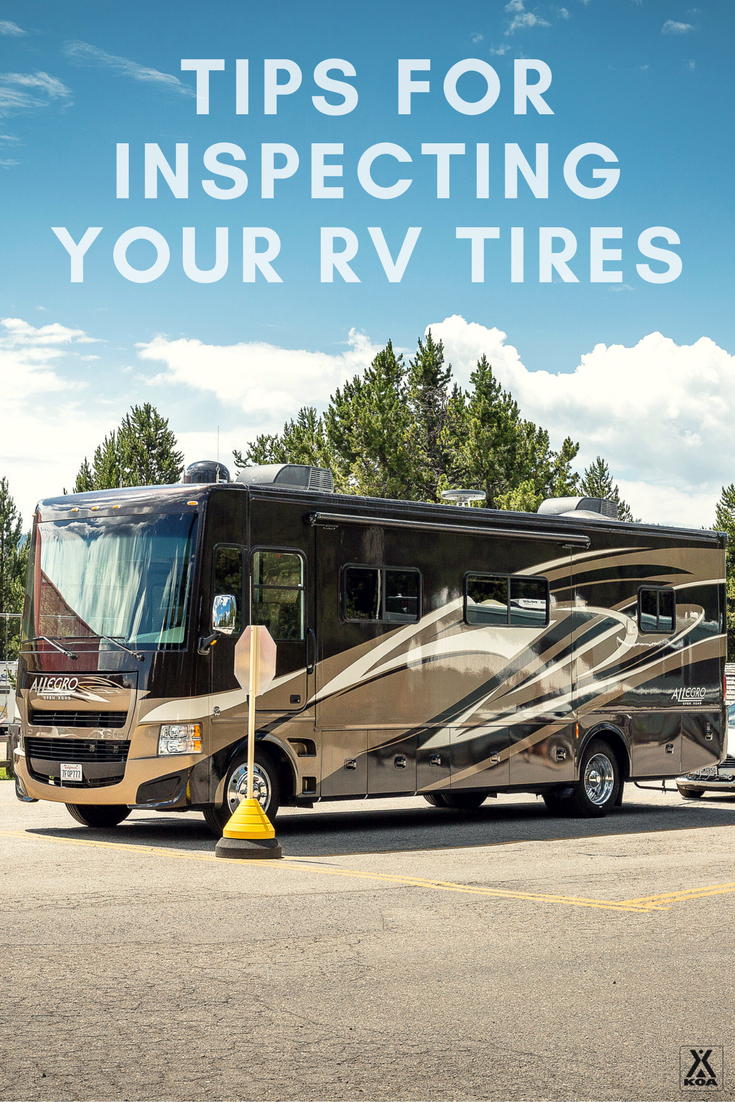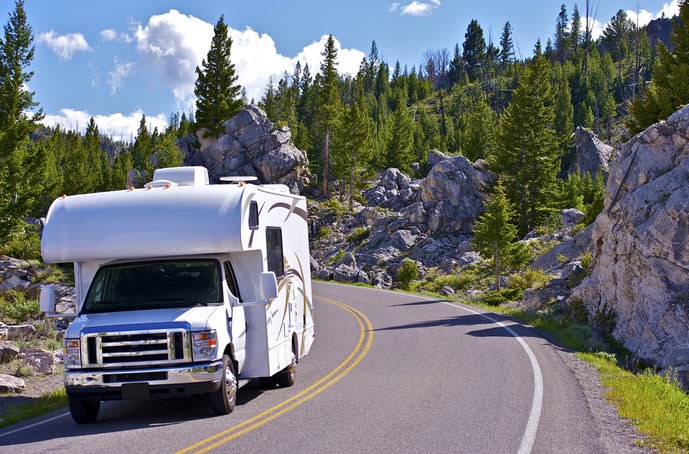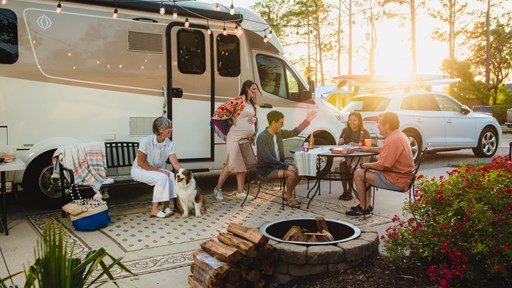Tire safety is one of the most important things to keep in mind when RVing. Use these simple tips to ensure your RV tires are in the best possible condition.
Do you know what this symbol means?
If you don’t now, odds are that you will the next time you purchase a new car, truck or RV. It’s the dashboard warning symbol for low-tire pressure, and vehicles sold after 2008 are required to have it.
On its tiresafety.com website, tire manufacturer Bridgestone noted that only 1 out of 7 drivers (about 15 percent) correctly tests their vehicle’s tire pressure every month—compared to the nearly 75 percent of drivers who will wash their cars. And yet tire pressure is an important component of vehicle safety and operation.
In fact, according to a recent report from the United States Government Accountability Office, nearly 250 fatalities and over 23,000 injuries were caused by skidding or loss of control related to under-inflated tires in a single year. An estimated 40 deaths and 1,200 injuries also occur annually because of blowouts—again because of under-inflated tires.
When a vehicle’s tires are under-inflated, its weight will be centered on the tread located just under the sidewalls, rather than properly being spread out across the tire. The rubber stretches, weakening it and increasing the likelihood of a blowout. Under-inflation, according to studies published by the National Highway Traffic Safety Administration (NHTSA) can also influence skidding, hydroplaning and increased stopping distances.
But tire pressure isn’t the only thing to be concerned about.

Here are a few suggestions for keeping your tires—whether they’re on your RV, car or truck—properly inflated in and the best possible condition
- Check your tire pressure once a month; for instance, on the first or fifteenth. For the most accurate readings, choose early morning before you drive your car so that the tires are cool. You’ll usually find the “cold pressure” readings on the label inside your vehicle’s doorjamb or in the owners manual. And don’t forget about the spare tire—you never know when you’ll need it. Also, don’t rely on your eye to gauge tire pressure; oftentimes, a tire can be at 50 percent of the recommended pressure before it’s noticeable.
- Look at your tread. Many tires have tread-wear indicators, sometimes called wear bars, to let you know when it’s time to replace them. For cars and pickups, you can also do the “penny” test like your grandpa used to do. Place a Lincoln penny upside down into the tread. If you can see the top of Honest Abe’s head, it means that tire tread is down to 2/32”—and that it’s time to go tire shopping.
- Re-Alignment: Drive an RV with a gross vehicle weight rating (GVWR) of over 10,000 pounds? The Rubber Manufacturers Association reminds that front tires must be replaced when they are worn down to a 4/32” depth. Also, while you’re checking your tread depth, also make sure to check the tread for uneven wear patterns that could suggest that your vehicle is in need of alignment. Also remove stones from tread and check for any cuts or bubbles.
- Rotate in 5 (8 Canadian). Most tire manufacturers recommend rotating your tires every 5,000 miles (8,000 km). This helps to lengthen tread life, maintain performance and optimize mileage. Timely rotation is also key in complying with many tire warranties.
- Know when to repair and when to replace. According to Goodyear, it’s important to know when it’s okay to repair a tire and when it should be replaced. If your tires are losing pressure, they recommend that it be removed from the wheel for a thorough inspection, because tires that run even a short distance when flat can be damaged beyond repair. Likewise, sidewall or tread punctures in excess of a quarter of inch should not be repaired—the tire should be replaced for safety reasons.


























